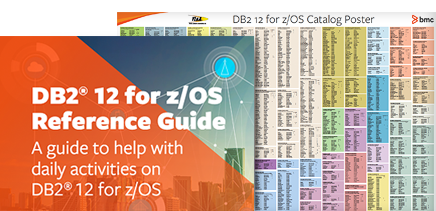One of the most valuable resources for modern businesses is data. Data increases its relevancy as technology continues to make strides in the storage, management, and utilization of immense amounts of information. Data can be used to provide insight into every facet of the business from operations to market trends. Armed with powerful data, business decisions can be made with confidence knowing that all factors have been considered.
While data can be incredibly valuable for businesses from every sector, your data is only as powerful as your ability to harness it. Storing, analyzing, and managing data in today’s world is a gigantic undertaking as the size and amount of data surges ever upwards. Entire industries have sprung up in response to the advancements made in the world of data analysis and management that have increased their scope and complexity many times over.
Many tools have been developed over time to aid in the management of data. We have come a long way from the days of maintaining handwritten records of all transactions. The primary tool for storing and analyzing information in the modern world is a database system. Various companies compete to act as the primary provider of database technology. International Business Machines Corporation (IBM) is one such company, establishing its presence early and firmly in the world of technology and data services.
IBM has made itself known on the world’s stage of technology since the earliest days of data recording and analysis. In fact, IBM began as the Computing, Tabulating & Recording Company (C-T-R) in the late 1800s. Their first big contract was with the United States government to provide tabulating equipment for the analysis of the 1890 US census. Today, IBM provides enterprise solutions for all things data-related, with its flagship product for database management, Db2.
What is Db2?
Db2, originally styled as DB2, is a relational database management system (RDBMS) which was first introduced by IBM in 1983 on their own multiple virtual storage (MVS) mainframe platform. Initially created for the IBM mainframe platform (modern versions of which are known as z/OS), Db2 was later opened up to function on other operating systems (OS) such as Linux, UNIX, and Windows.
Db2 is a full-featured database engine designed to handle massive quantities of data and to provide the ability for multiple concurrent users to interact with the database simultaneously. IBM’s z/OS 64-bit operating system is the go-to infrastructure for database systems and is the default pairing for Db2 systems. IBM’s newest product in a long line of successful database technologies is Db2 12 for z/OS.
What is Db2 12 for z/OS?
Db2 12, released for general use on October 21, 2016, is the twelfth and most recent major installment of the Db2 product family. With the release of Db2 12, IBM has further cemented their place in the technology industry as one of the primary providers of cutting-edge database technology.
Db2 12 for z/OS extends the core capabilities of Db2 and empowers its scalability, security, reliability, and efficiency. Db2 12 was created to empower the next wave of applications in the cloud, mobile, and analytics spaces. Db2 12 provides users with the continuous delivery of new capabilities and enhancements as they are made, marking IBM’s switch of Db2 to the software as a service (SaaS) model.
Db2 12 allows for the management of core business data across your enterprise while supporting key business applications. Db2 version 12 provides database management through the use of structured query language (SQL), the industry standard database manipulation language. Db2 12 allows for up to 11.7 million inserts per second and up to 256 trillion rows per table. Those kinds of big data management capabilities ensure enterprise database systems are prepared for today’s and tomorrow’s database challenges.
Db2 12 is popular with many of the largest banking organizations in the United States. Many US tech companies also take advantage of IBM’s Db2 12 for z/OS capabilities. According to IBM, Db2 12 for z/OS offers up to 23% lower CPU costs thanks to its increased efficiency. But fear not, scalability and speed (with up to 100 times faster queries) have not been sacrificed for the sake of efficiency with the newest version of Db2.
The enhancements and modifications made to Db2 in version 12 are numerous, and they vary by the function levels activated by database administrators. We have put together a collection of resources to make learning more about Db2 12 for z/OS easier for you.
Db2 12 for z/OS Resources
The IBM Knowledge Center is a fount of knowledge for all things Db2 12 related as they are the originators of the technology. IBM offers their general breakdown of what Db2 for z/OS is here. And you can find a detailed breakdown of the enhancements offered by Db2 12 in this section of the IBM Knowledge Center. You can also learn more about Db2 for z/OS and SQL concepts. This Db2 12 for z/OS Command Reference is also provided by IBM for those involved in system administration, database administration, and operation.
Videos are a great source of information that can be easier to digest for some on all subjects. This is no less the case for database systems and this YouTube playlist was put together specifically for those looking to learn more about Db2 12. You can also request free Db2 for z/OS collateral from the experts at BMC.






